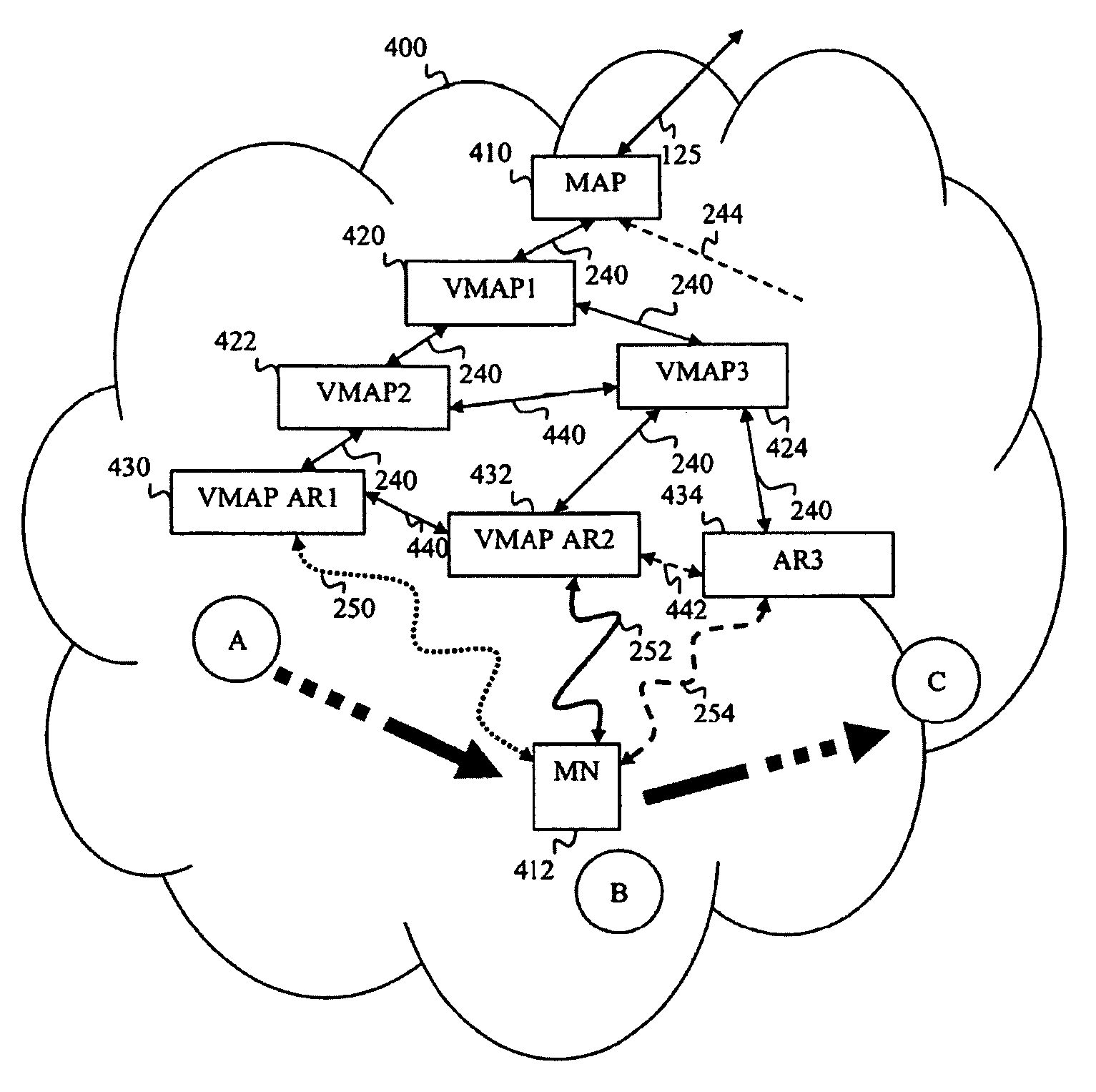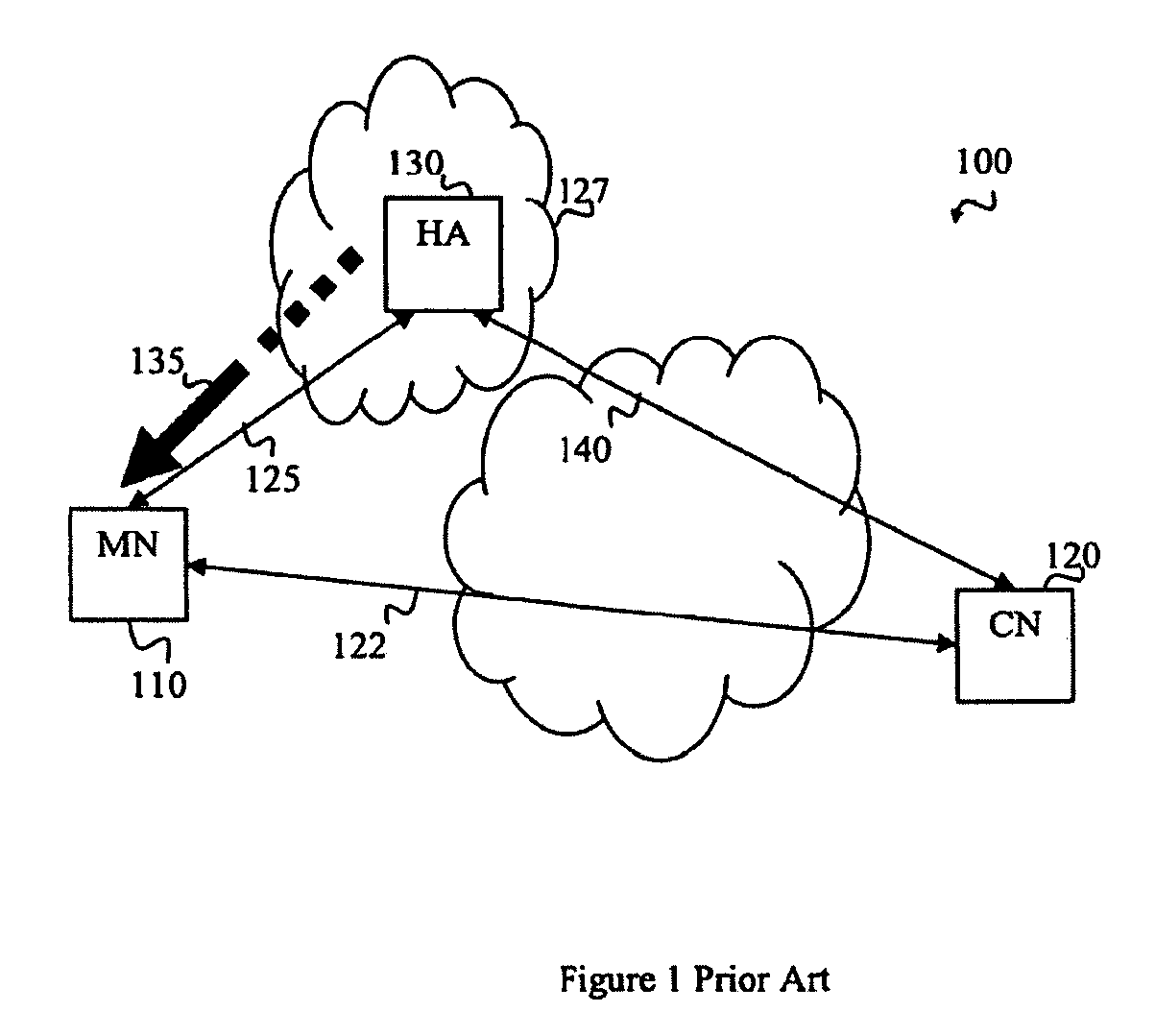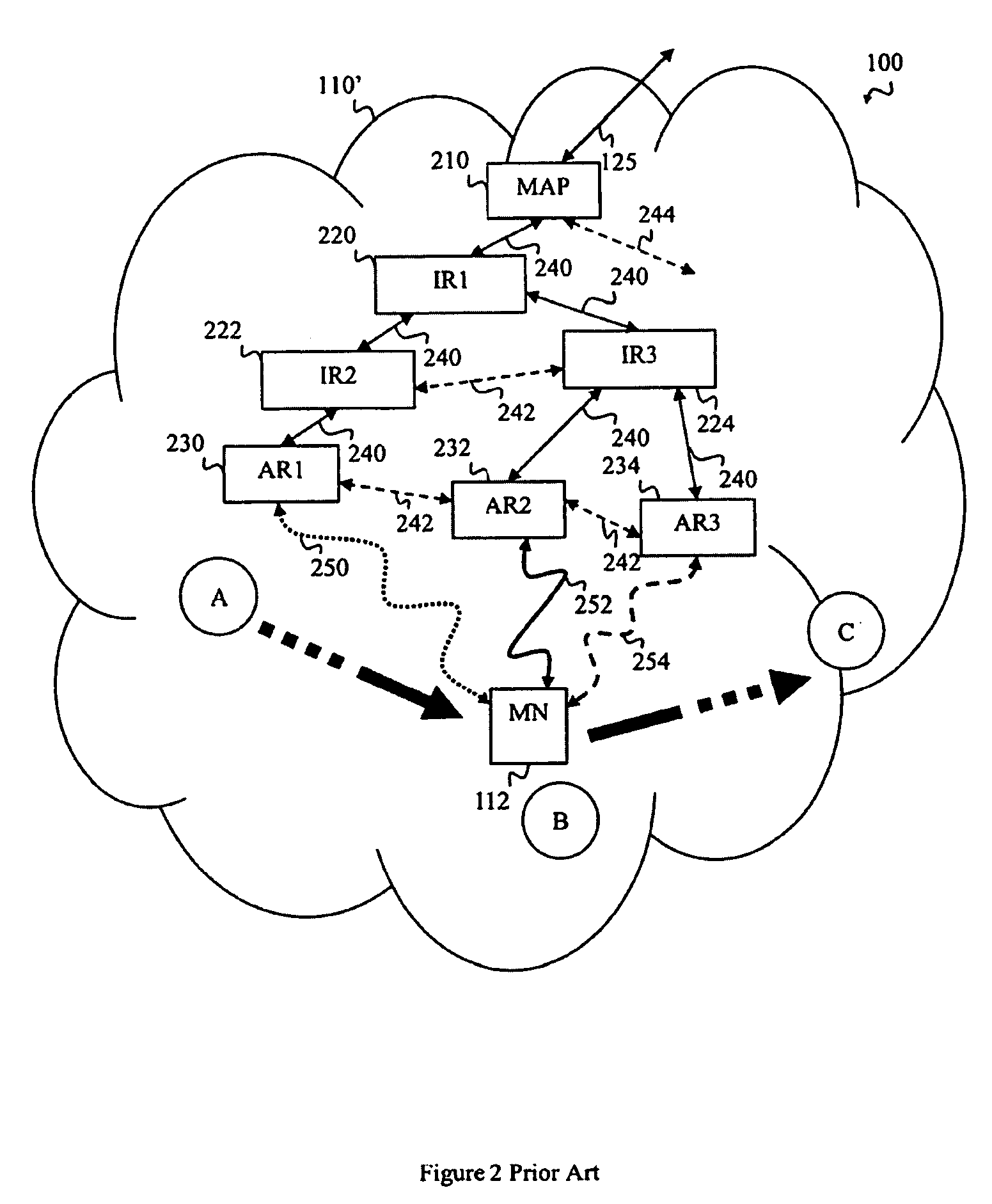Micro mobility management
a micro-mobility and management technology, applied in the field of micro-mobility management, can solve the problem of no guidance as to how the map is presented, and achieve the effect of increasing the efficiency of handover of a mobile nod
- Summary
- Abstract
- Description
- Claims
- Application Information
AI Technical Summary
Benefits of technology
Problems solved by technology
Method used
Image
Examples
Embodiment Construction
[0042]The present invention provides an improved micro mobility management mechanism, compatible with HMIPv6. The improved mechanism takes advantage of existing address management procedures to ease the handover of a communication between a first access router to a new access router. In order to do so, a new function of Virtual Mobile Anchor Point is introduced nearer to the mobile nodes (MNs) in comparison to the MAP. For instance a MN could be connected to a first access router with a first address valid thereunder. A VMAP hierarchically responsible for the first access router keeps track of messages exchanged between the MAP and the MN. The VMAP further reacts as soon as a handover of the MN toward a new access router is confirmed by computing a new address of the MN valid under the new access router and tunneling the traffic received on the first address of the MN to the new address of the MN. The handover at the VMAP is confirmed by reception of a message to this effect from th...
PUM
 Login to View More
Login to View More Abstract
Description
Claims
Application Information
 Login to View More
Login to View More - R&D
- Intellectual Property
- Life Sciences
- Materials
- Tech Scout
- Unparalleled Data Quality
- Higher Quality Content
- 60% Fewer Hallucinations
Browse by: Latest US Patents, China's latest patents, Technical Efficacy Thesaurus, Application Domain, Technology Topic, Popular Technical Reports.
© 2025 PatSnap. All rights reserved.Legal|Privacy policy|Modern Slavery Act Transparency Statement|Sitemap|About US| Contact US: help@patsnap.com



